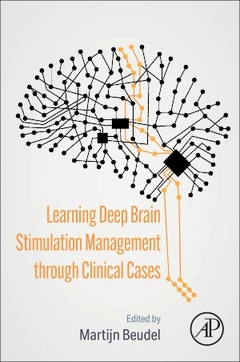Learning Deep Brain Stimulation Management through Clinical Cases
Auteur : Beudel Martijn

Learning Deep Brain Stimulation Management through Clinical Cases reviews the clinical practice of applying deep brain stimulation (DBS) to patients with movement disorders. The book explores the cardinal aspects of applying DBS in diverse movement disorders based on patient?s needs. Every case answers all questions, providing case descriptions and step-by-step procedures for optimal replication. Every chapter includes a clinical decision support system (CDSS) depicted in flowcharts that can be used for reference. Deep Brain Stimulation (DBS) uses electrical stimulation to regulate electrical signals in neural circuits to and from identified areas in the brain to improve movement symptoms. The management of DBS in a movement disorders can be challenging, optimizing patient journeys and grasping all clinical aspects of the highly technological therapy. Hence, this book provides the informaiton necessary to embrace new breakthroughs.
1. Parkinson's disease: Should I receive DBS?
2. Dystonia: Is the absence of clinical evidence the evidence for an absent effect?
3. After structural damage
Post-operative: initial phase
4. Parkinson's disease: how long should I wait before the system works?
5. Tremor: the variable effect off DBS
6. Parkinson's disease: did I get sufficient effect?
7. Dystonia: how long should I wait before it works?
8. Primary non-responder
Post-operative: long term
9. Parkinson's disease: walking problems after STN DBS
10. Parkinson's disease: speech problems after STN DBS
11. Parkinson's disease: what happened to my husband?
12. secondary non-responder
13. after structural damage
Future Directions
14. How to optimally guide patients through the DBS journey?
15. Shall I go for FUS or DBS?
16. Telemedicine and future technological DBS developments
17. Expanding indications
- Discusses long-term problems after DBS, including gait
- Provides readers with clinical decision support systems (CDSS) depicted in detailed flowcharts
- Includes high quality neuro-anatomical illustrations in every chapter/case description using (open source) lead-DBS software
Date de parution : 08-2024
Ouvrage de 450 p.
15x22.8 cm



